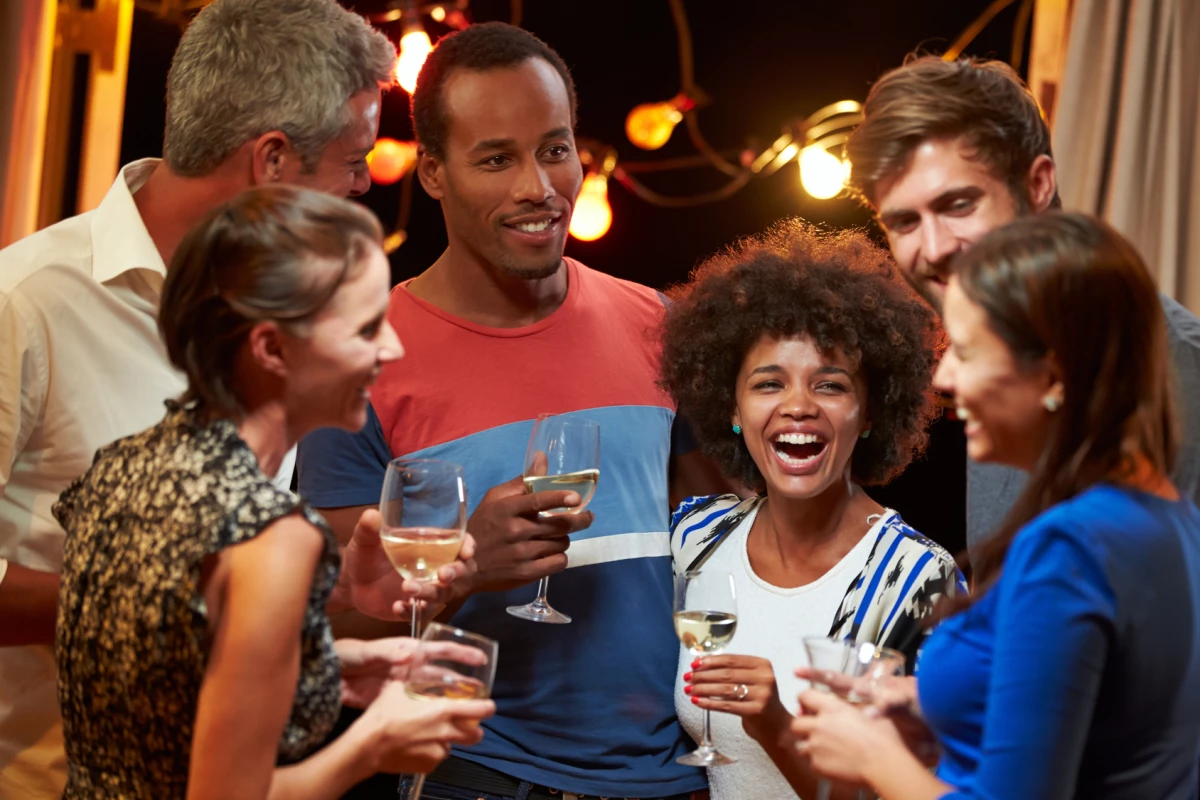Drinking in a social setting triggers the release of dopamine, causing a euphoria that isn’t seen when drinking alone, according to a new study. By identifying the region of the brain stimulated by social drinking, the researchers hope it will lead to a greater understanding of problem drinking.
Whereas drinking with friends or colleagues tends to be associated with good feelings and an upbeat mood, drinking alone conjures up visions of loneliness, depression, and, sometimes, alcoholism. It’s known that alcohol consumption causes dopamine to be released in the brain, causing a sense of euphoria. Indeed, chasing that alcohol-related dopamine high can lead to problem drinking.
In a new study, researchers from the University of Texas at El Paso (UTEP) examined the biological process behind social drinking, including dopamine’s role, and how it produces these positive feelings.
“Social settings influence how individuals react to alcohol, yet there is no mechanistic study on how and why this occurs,” said Kyung-An Han, PhD, a biologist at UTEP and the co-corresponding author of the study.
To study the effect consuming alcohol in a social setting has on behavior, the researchers used intoxicated fruit flies or Drosophila. It may seem like a strange choice, but, in reality, it’s not: we share about 75% of the same genes that cause human diseases.
The flies were exposed to ethanol vapor either alone or in a group setting, and their average speed was measured to determine the degree of ethanol-induced response. The researchers observed that solitary flies who ‘drank alone’ showed a slight increase in movement, whereas those who got drunk in a group displayed significantly increased speed and movement.
They then tested the intoxicated flies’ dopamine levels and compared them to a control group. Whether they had normal or increased dopamine levels, when the intoxicated flies were alone, they still produced only a small increase in activity. Not so when they were in a group, where intoxicated flies with increased dopamine levels showed even more heightened hyperactivity.
“We demonstrated that both social settings and dopamine act together for the flies’ heightened response to ethanol,” Han said.
Lastly, the researchers set about identifying which of the five dopamine receptors in the brain contributed most to this process. They found that it was the D1 dopamine receptors, which are known to play important roles in things like learning and memory and reward mechanisms.
“The human D1 receptor gene is linked to Alcohol Use Disorder, and this study provides experimental validation for it,” explained Han. “For the team, the identification of the D1 receptor is crucial as it gives researchers at UTEP and beyond a blueprint for follow-up studies.”
According to 2019 statistics from the World Health Organization (WHO), an estimated 400 million people – 7% of the world’s population – aged 15 and over live with alcohol use disorder (AUD) globally. Alcohol abuse and alcohol dependence used to be separate diagnoses under the DSM-IV, the previous edition of the psychiatrists’ diagnostic ‘bible’. However, with the publication of the current DSM-5, the two conditions were integrated into a single disorder, AUD.
The researchers hope that their findings will inform future AUD treatments.
“Our work is providing scientific knowledge to support the idea that the brain interprets and processes a person’s social surrounding and has that signal converge into the dopamine system that is also activated by alcohol consumption,” said Paul Rafael Sabandal, PhD, an assistant professor in biological sciences and the study’s other corresponding author. “It gives us as researchers an idea of which brain area and components may serve as the meeting point for all the signals that contribute to AUD.”
“The opportunity to work on projects whose positive impact can be applied at scale is one of the reasons I became a scientist,” Han added. “It’s humbling to know that our work has the potential to help people live better lives, and our team is going to continue striving toward achieving that goal.”
The study was published in the journal Addiction Biology.
Source: UTEP





